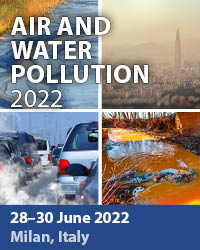Environmental And Socio-economic Contributions Of Palm-leaf Geotextiles To Sustainable Development And Soil Conservation
Price
Free (open access)
Transaction
Volume
81
Pages
10
Published
2005
Size
553 kb
Paper DOI
10.2495/ECO050641
Copyright
WIT Press
Author(s)
C. A. Booth, K. Davies & M. A. Fullen
Abstract
Geotextiles are employed in civil engineering and construction applications to efficiently and economically conserve soil. Palm-leaf geotextiles offer considerable potential to contribute to sustainable development and soil conservation. Their use can promote sustainable and environmentally-friendly palm agriculture, labour-intensive employment and earn hard currency. Ongoing field and laboratory research is investigating geotextile mats manufactured from palm-leaves to evaluate their long-term effectiveness in controlling soil erosion and assess their sustainability and economic viability. Palm-leaf geotextiles are novel and offer new bioengineering solutions to environmental problems. This is achieved through: (i) Promotion of sustainable and environmentally-friendly palm agriculture to discourage deforestation, promote both reforestation and agroforestry and offer a potential for commercial development. (ii) Construction of palm geotextiles to develop into a rural based labour-intensive industry, particularly encouraging employment of socially disadvantaged groups. In turn, this contributes to the stabilization of rural populations, thus decreasing migration to urban areas. (iii) Export of completed palm geotextiles to industrialized countries earns hard currency for rural developing economies, based on the principles of fair trade. (iv) Application of palm geotextiles are especially beneficial for complex engineering problems, as temporary application of geotextiles allows sufficient time for plant communities to stabilize engineered slopes. Investigations suggest palm geotextiles are an effective, cheap and economically-viable soil conservation method, with tremendous potential. Palm geotextiles offer enormous multi-faceted environmental benefits, which include technologies for sustainable plant production, promoting sustainable use of indigenous plants, improved ecosystem management, decreasing deforestation, improved agroforestry and successful and cost-effective geotextile applications in diverse environments. Palm geotextiles improve socio-economic foundations for sustainable development and the benefits for developing countries include poverty alleviation, engagement of disadvantaged groups as stakeholders, employment for disadvantaged groups, SME (small and medium enterprise) development, earning hard currency, environmental education and local community involvement in reclamation and environmental-improvement programmes. Keywords: soil erosion, runoff plots, geotextile, Borassus aethiopum.
Keywords
soil erosion, runoff plots, geotextile, Borassus aethiopum.





